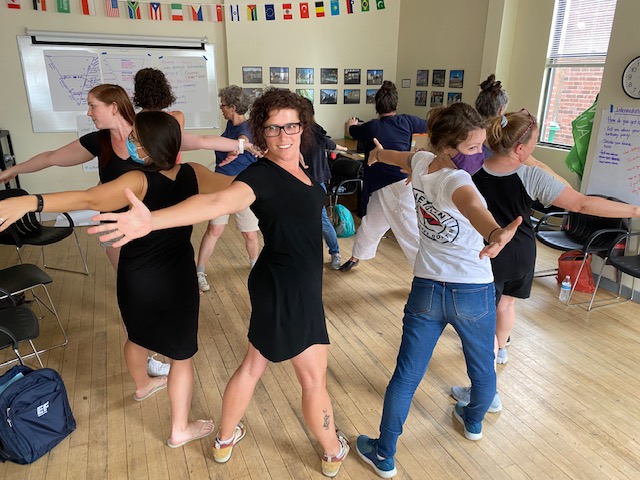
Blog written by Emma Bricker
“Joy is increased by spreading it to others.” —Robert Murray McCheyne
I love this quote, as for me it underscores the purpose of joy; to be spread and shared. Joy is most often used as a noun, meaning the emotion evoked by well-being, success or good fortune. In the form of a verb, joy means to experience great pleasure or delight; rejoice. With either use of the word, noun or verb, it is clear that by sharing joy it will increase. To this end, I want to share some joyful practices and hope that they will inspire you to spread joy in your teaching.
The Joy of Play
One of the hallmarks of joy is well-being. The well-being of our students has always been a priority, and is only more so this year as we grapple with an ever changing landscape in teaching. Knowing our students; their likes and dislikes, favorite things to do with their free time, what motivates them, what makes them unique, and other personal details; helps us to really see them as people, not simply as the administrative information we receive on day one. Playing with your students is a way to reveal some of the connecting tid-bits without the typical ‘classroom’ feel. A few activities that I have found to be particularly successful include:
- Two truths and a lie
- Fast five
- 50 words picture
- Leap at the fact.
These activities are applicable to any kind of classroom mode you are in this year, virtual or face to face and are sure to inspire joy among your students. With thoughtful and intentional prompts, the students share with one another (and you!) in a playful, and joyful manner, discovering commonalities (and differences) and building relationships along the way.
The Joy of Student Choice
One of the stumbling blocks that we as teachers come up against is students believing that school is driven by teachers and administrators; that they have little to no voice in what, or how, they are learning. By allowing student direction, or student choice, we can increase not only the joy of learning, but also the feeling of ownership toward that learning. For example, students can choose books they wish to read, then write in a genre that works best for them. We can invite other methods of self-expression into our classes by encouraging them to demonstrate learning in a variety of ways: podcasts, performances, interviews, comic books, and art projects. They are limited only by their imagination. We can give them the opportunity to choose a topic of choice, become an ‘expert’ then share their knowledge with the class in a manner that illustrates their mastery while giving them ownership of the process. Through these types of activities, the joy of learning is rediscovered as students see a path to develop and share their passion with their peers and the school community. Giving students choice can nurture intrinsic motivation, curiosity and self awareness, and at the same time foster their joy of learning.
By prioritizing joy and intentionally integrating it into classes, you may rediscover the love of learning yourself! Share with students, things that bring you joy. Take time to connect and build relationships with your students using the interests that each contributes as a foundation. As you close in on the winter break, remember to look for opportunities to laugh, have fun, and celebrate your students. The positive, joyful experiences, those that create the feeling of well-being, success and good fortune, will ensure that the lessons learned will be remembered long after class has ended.
